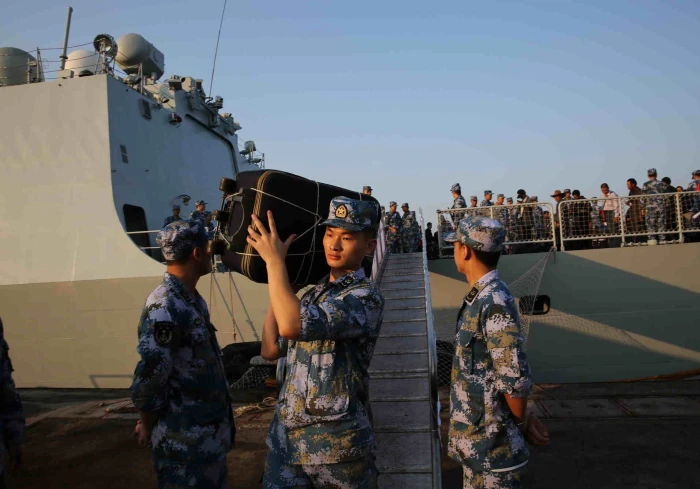China likely intends to have at least 1,000 nuclear warheads by 2030 and is also making intense efforts to project its military power in Asia, focusing on Sri Lanka, Pakistan and Seychelles besides Cambodia, Thailand, Indonesia and several other countries.
The US Defence Department's annual report on military and security developments involving China – commonly referred to as the China Military Power Report – released this week provides interesting details about how the Chinese People's Liberation Army (PLA) is pursuing big ambitions to expand its military logistics facilities well beyond its sole base in Djibouti.
The report titled 'Military and Security Developments Involving the People’s Republic of China-2021' revealed that Beijing "is very likely already considering and planning" for additional military bases and logistics facilities to support naval, air, and ground forces projection.
"The PLA's approach likely includes consideration of many different sites and outreach to many countries, but only some will advance to negotiations for an infrastructure agreement, status of forces or visiting forces agreement, and/or basing agreement," the report mentions.
It says that China's overseas military basing will be constrained by the willingness of potential host nations to support a PLA presence.
"The PRC has likely considered a number of countries, including Cambodia, Myanmar, Thailand, Singapore, Indonesia, Pakistan, Sri Lanka, United Arab Emirates, Kenya, Seychelles, Tanzania, Angola, and Tajikistan, as locations for PLA facilities," it details.

The annual report, prepared by the Department of Defence (DoD) on military and security developments involving China, is submitted to the US Congress lists out how the PLA military facilities could both interfere with US military operations and "support offensive operations" against Washington as Beijing's global military objectives evolve.
"The PRC is seeking to establish a more robust overseas logistics and basing infrastructure to allow the PLA to project and sustain military power at greater distances," the DOD official said. "We're talking about not just within the immediate environments, environments in the Indo-Pacific, but throughout the Indo-Pacific region and indeed, around the world."
It mentions that China's national strategy to achieve "the great rejuvenation of the Chinese nation" by 2049 is deeply integrated with its ambitions to strengthen the PLA and that its armed forces should take a more active role in advancing its foreign policy goals.
Also Read: China digs in Africa with an eye on its coastline for military bases
According to the report, as China's overseas interests have grown over the past two decades, it has led to greater willingness to use "military coercion and inducements" to advance its global security and development interests.
"In 2020, the PLA continued to normalize its presence overseas and build closer ties to foreign militaries, primarily through Covid-19 related aid," it says.
It mentions that China's Belt and Road Initiative (BRI) expands Beijing's overseas development and security interests and will drive the country towards expanding its overseas military footprint.

Chinese service members stand in formation at the Beijing headquarters of the Chinese army (Image courtesy: US Defence Department/Navy Chief Petty Officer Elliott Fabrizio)
Meanwhile, China has hit back at Washington saying that the US Defence Department's report "disregards facts and is filled with bias".
"The US is using this report to hype up the China nuclear threat theory. But this trick of manipulating rhetoric to confuse public opinion is seen through by the international community," said the Chinese Foreign Ministry spokesperson Wang Wenbin in Beijing insisting that no country will be threatened by China's nuclear weapons "so long as it does not use nuclear weapons against China".
The Chinese embassies in countries where, as per the report, the PLA facilities could come up in future, have also been told to spring in action.
"A thief believes everybody steals. Despite the withdrawal of US military bases and troops from Afghanistan, the US continues to maintain about 750 military bases abroad. These bases are costly in a number of ways: financially, politically, socially, and environmentally," tweeted the Chinese embassy in Sri Lanka today.
The Chinese are only proving the US right. The DoD report details the priority PLA places on gaining and maintaining the information advantage through information control, such as propaganda, denial and deception.
Also Read: Is China building a military base in Tajikistan to counter Uyghur spillover from Afghanistan?




















